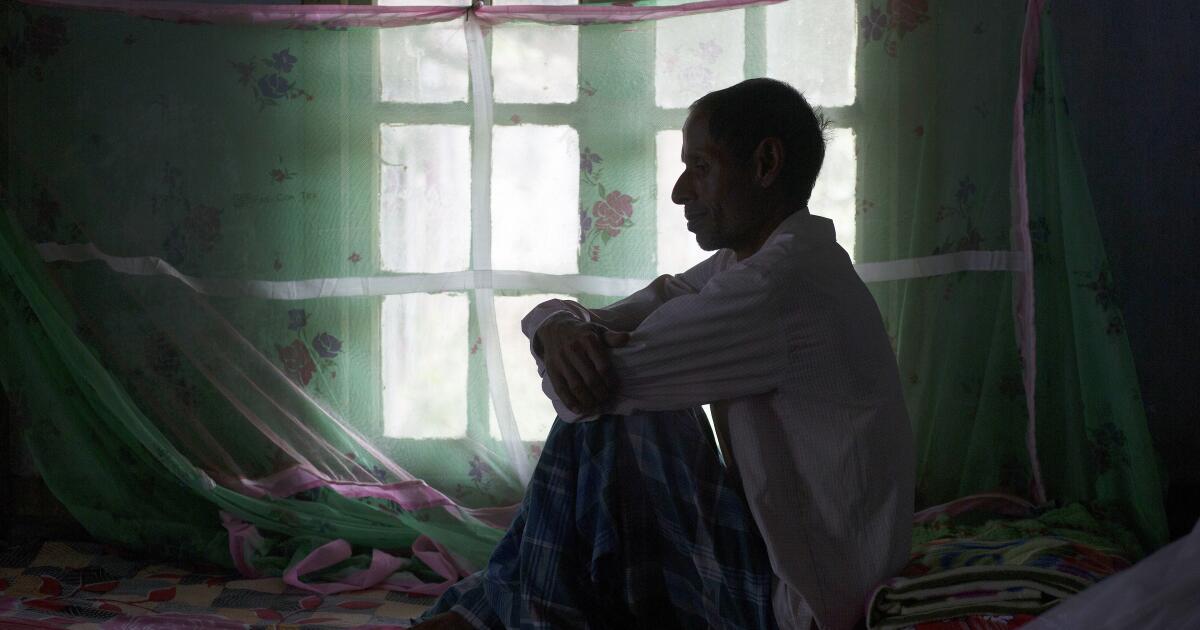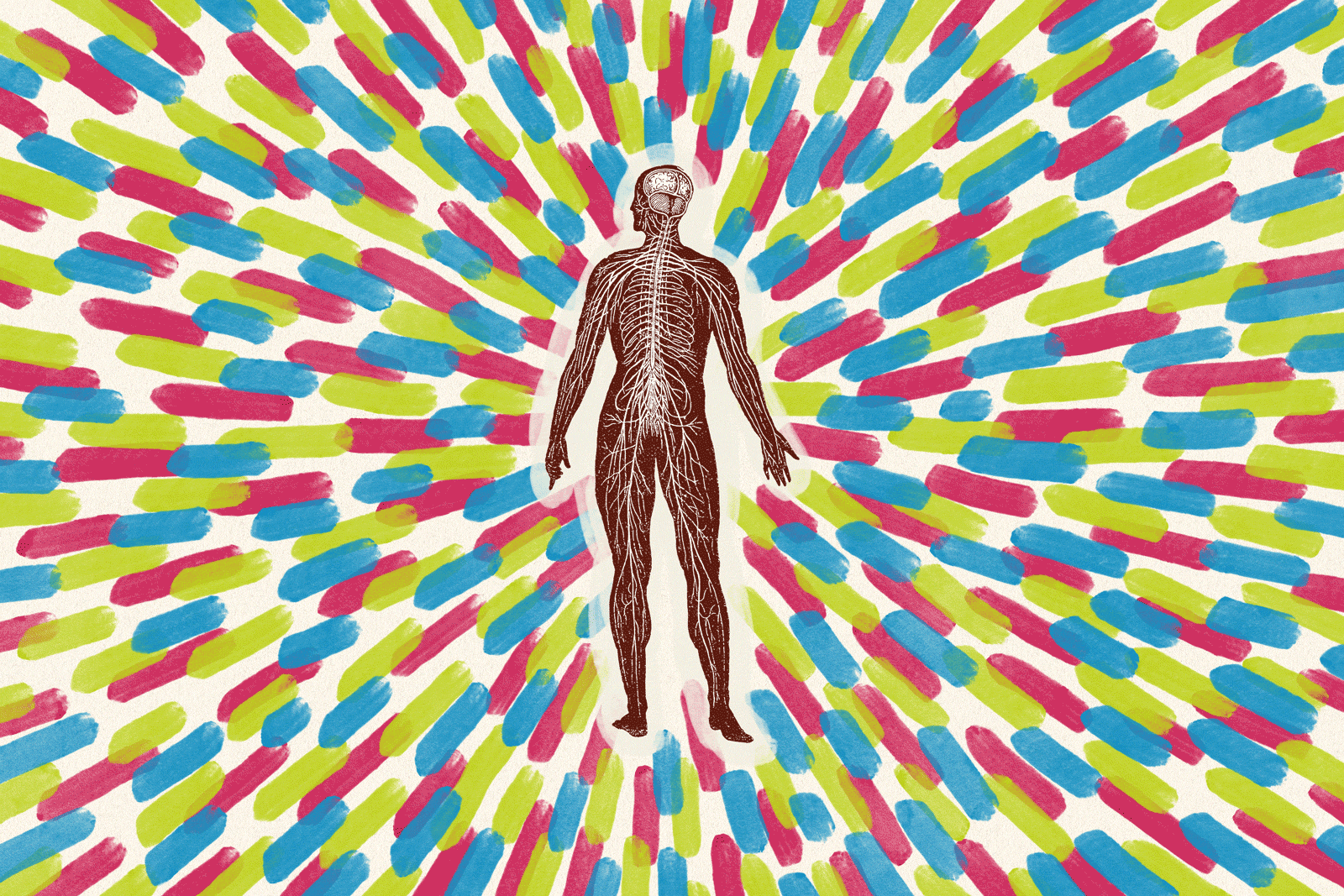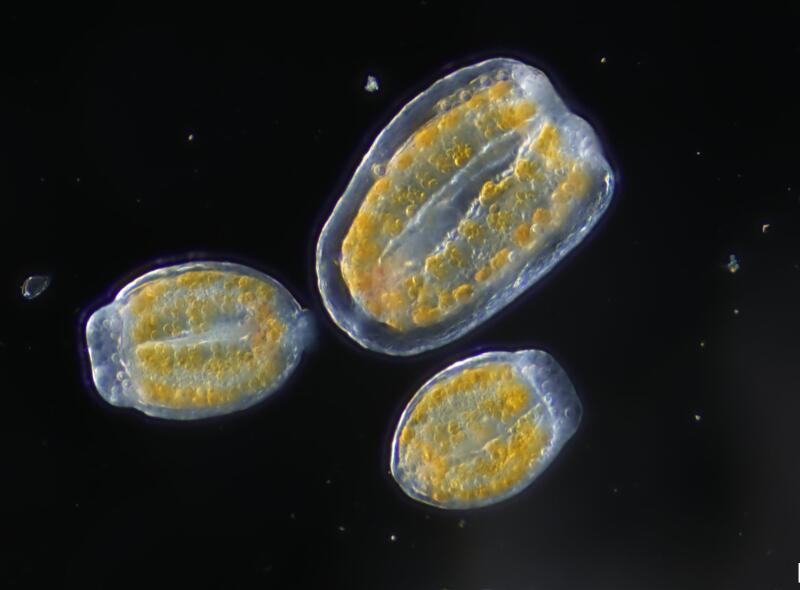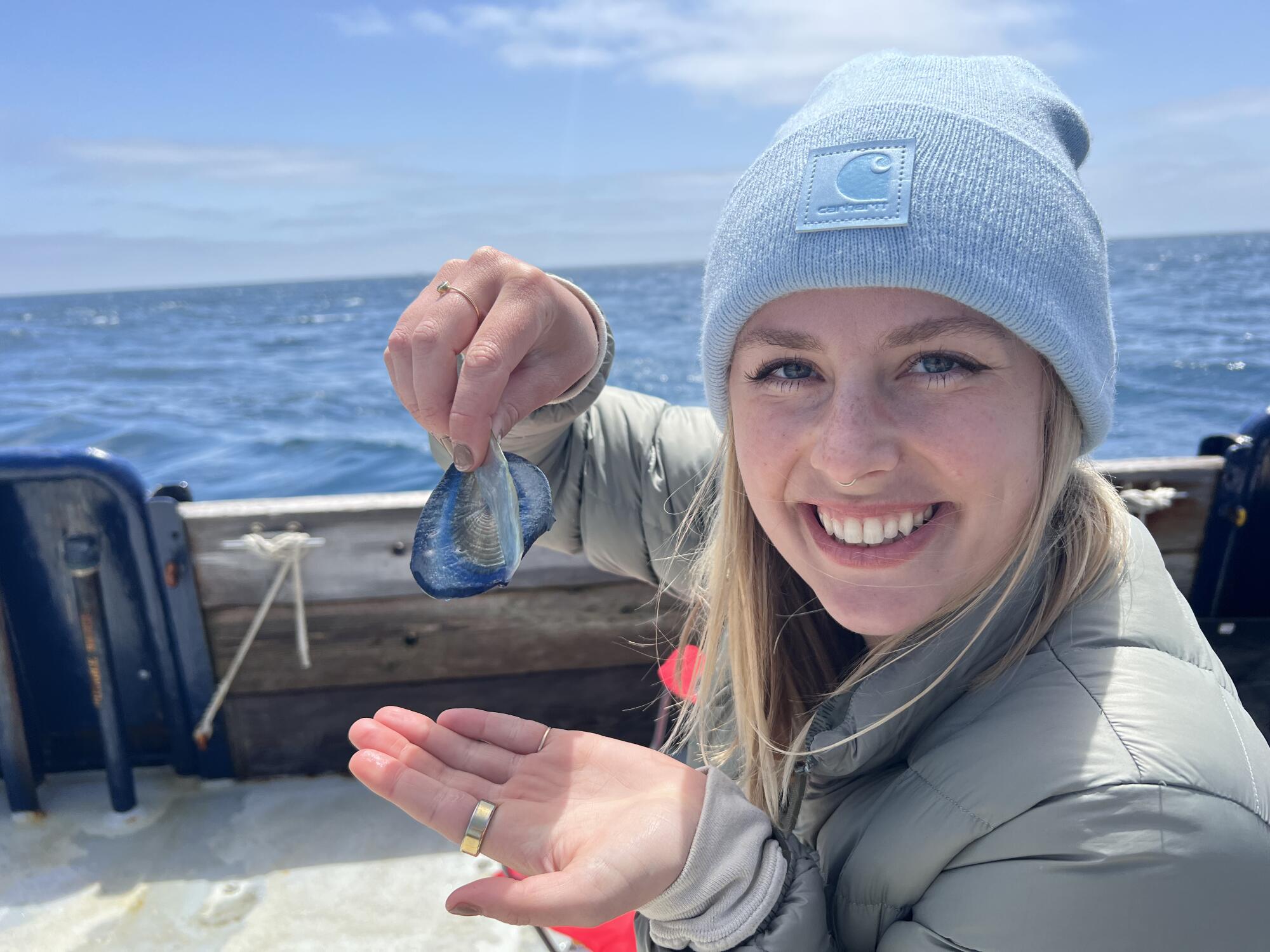Science
Tuberculosis cases rising in California, and state officials are sounding the alarm

Tuberculosis cases are rising again in California, and health officials are urging those at higher risk, as well as doctors, to be alert for the disease, which can lurk in people’s bodies for years before becoming potentially deadly.
The number of tuberculosis cases in 2023 rose by 15% in California compared with the previous year, the state Department of Public Health said. That’s the highest year-over-year increase since 1989, when it was tied to people co-infected with HIV.
There were 2,113 cases across California last year; that’s about the same amount reported in 2019, before the COVID-19 pandemic. Seniors 65 and older had the highest percentage increase in cases from 2022 to 2023.
Tuberculosis rates also are rising nationally, up 16% in 2023 compared with the previous year, the U.S. Centers for Disease Control and Prevention said Thursday. The 9,615 cases provisionally reported last year were the highest since 2013 and were 8% higher than the tally of 8,895 cases reported in 2019.
Those at major risk for tuberculosis include people who have lived outside the U.S. where the TB rate is high, including most nations in Asia, the Middle East, Africa, Eastern Europe and Latin America.
Nationally in 2023, TB cases increased among all age groups and those born inside or outside the U.S., the CDC said.
Caused by bacteria Mycobacterium tuberculosis, tuberculosis disease is spread through the air. Unlike COVID-19 — in which infection can occur in minutes — a person would typically need to be exposed for hours to inhale enough TB bacteria to get infected, said Dr. Julie Higashi, director of the L.A. County tuberculosis control program.
Most active cases in California are from people with latent TB who picked up the bacteria decades ago but weren’t contagious or showing symptoms. “Then something happens. Either they age … and their immune system actually becomes weaker … and then they progress” to acute TB, Higashi said.
On the flip side, an estimated 18% of TB cases in L.A. County occur from recent transmission.
California officials said that 13% of people with tuberculosis died in 2020. That’s up from 8% in 2010. Generally, more than 200 Californians die from tuberculosis every year, state officials say.
TB has afflicted humanity since before the dawn of recorded history, and at one point in the 17th and 18th centuries, caused one-quarter of all deaths in Europe.
It was only on March 24, 1882 — 142 years ago Sunday — that a scientist announced the discovery of the bacteria that causes TB. (Decades earlier, TB was thought to be hereditary, and in New England, inspired “vampire panics” because people thought the first family member to die of TB would come back as a vampire to infect the rest of them, according to the CDC.)
By the start of the 20th century, tuberculosis was one of the leading causes of death in the United States.
Governments in the early part of the last century began making serious progress in preventing infectious diseases. According to the CDC, housing improvements reduced overcrowding — a risk factor for TB spread — and programs were launched to control TB. By 1940, the TB death rate was one-fourth what it had been at the turn of the century. Further progress was made with the discovery of TB treatments in the middle of the 20th century.
TB cases have generally been declining in California since the early 1990s but continue to take a significant toll, a tragedy given the disease is detectable and treatable.
“Not only can you treat the active disease, you can also treat the latent disease, which is much easier to treat — fewer drugs, much shorter time — and then prevent that progression to the active form of disease,” Higashi said.
The CDC estimates 13 million people in the U.S. have a latent tuberculosis infection — meaning they have no symptoms and can’t spread the bacteria. Without treatment, 5% to 10% will develop active disease that can turn contagious and potentially deadly later in life.
Outbreaks can happen locally. In Contra Costa County last year, 11 confirmed cases were linked to staff and customers of the California Grand Casino in Pacheco. At least 10 cases were genetically linked.
According to the most recent data, California counties with the highest per capita rates of tuberculosis are generally along populous coastal areas. In Southern California, those with the highest rates were Los Angeles, San Diego, Orange and Imperial counties. In Northern California, they were Santa Clara, Alameda, Sacramento, Contra Costa, San Francisco, San Mateo, San Joaquin, Solano, Monterey and Napa counties.
Officials noticed a substantial drop in TB cases in 2020, tied to stay-at-home orders and reduced travel during the early phase of the pandemic. Since then, case rates have increased 4% to 5% each year before jumping by 15% in 2023.
The rise in TB cases in Orange County, California’s third most populous, has been especially pronounced, jumping 20% between 2022 and 2023; in L.A. County, cases rose by about 4% over the same time, according to local data.
According to state data, Orange County’s per capita TB case rate is 10% higher than L.A. County’s.
“We have a lot of people who travel, and also have family members who come from other countries with higher rates of TB,” Dr. Regina Chinsio-Kwong, Orange County’s health officer, said.
Cities in Orange County with TB case rates higher than the overall county rate are Laguna Hills, Westminster, Garden Grove, Buena Park, Santa Ana, Fountain Valley, Anaheim, Costa Mesa and Lake Forest, according to county data.
Those at highest risk in Orange County are people born outside the U.S., Asian Americans, males, and seniors age 65 and up. Having diabetes, HIV or smoking cigarettes increases the risk of having latent TB develop into full-blown TB, Chinsio-Kwong said.
With “latent TB, when someone’s immune system is nice and strong, you have no symptoms, it doesn’t affect your organs,” Chinsio-Kwong said. “But it can develop into active TB when you’re immunosuppressed. So that’s where diabetes, smoking or any infectious disease, like HIV, can really put you at higher risk of developing an active TB case.”
Routine testing for higher-risk people, such as healthcare workers, can be helpful. Chinsio-Kwong said she was diagnosed with a case of latent TB earlier in her career, prompting her to take a nine-month regimen of treatment.
“If we can appropriately treat all the latent TB cases, we can really reduce the number of active TB cases,” she said. “The hope is that you detect latent TB before you develop symptoms — because by the time you have symptoms, you’re an active TB case, spreading your germs and possibly even spreading the infection to others.”
In Los Angeles County, 91% of tuberculosis cases were among Latino or Asian American residents. The top seven countries of birth of people with TB were Mexico, the Philippines, Guatemala, China, Vietnam, El Salvador and South Korea.
Areas with the highest tuberculosis case rates in regions monitored by the L.A. County Department of Public Health were in central L.A., which the agency defines as including downtown, Echo Park, Silver Lake and the Hollywood Hills; South L.A.; and an area of the western San Gabriel Valley that includes Alhambra, Monterey Park and San Gabriel.
Other areas with TB rates above the L.A. County average include the neighborhoods covering Hollywood, northeast L.A., El Monte, East L.A., Inglewood, Torrance and Bellflower.
Of the regions with L.A. County’s highest TB cases, those with the highest mortality rates were in the Alhambra-Monterey Park-San Gabriel area, where 15.4% of tuberculosis cases resulted in death; and Central L.A., where 20.5% of cases resulted in death.
A large problem with TB is that it’s possible for doctors to miss a diagnosis, as TB is relatively rare. The California Department of Public Health last month urged healthcare providers to consider tuberculosis as a potential cause of respiratory illness among higher-risk people.
There are situations in which doctors can misdiagnose people with TB. While the disease typically grows in the lungs — leading to symptoms such as chronic cough, chest pain and coughing up blood — the bacteria also can grow in other areas of the body, including the gastrointestinal tract or the nervous system, and doctors might miss a TB diagnosis in that atypical presentation.
Instances of misdiagnosed TB cases previously documented by The Times include a San Fernando Valley businessman, who was raised in Chile and suffered for 11 years until a TB diagnosis was made; and a Shanghai-born UC Berkeley Mandarin lecturer who was misdiagnosed with Crohn’s disease and given a steroid to suppress her immune system, allowing her TB to spread. It was only when she lay gravely ill in a hospital that a doctor seriously considered TB.
One prominent misdiagnosis occurred in 2004, when Dr. Claudia Lacson — pregnant with her first child — fell into a coma in Georgia after complaining of severe headaches and a persistent fever. Doctors initially suspected bacterial meningitis, but by the time doctors began TB treatment, it was too late, and she died at age 38, weeks after giving birth to a daughter, who also did not survive.
“What we want providers to know is that when any individual comes to them presenting with respiratory symptoms, they need to start thinking about is: Is this potentially a person who is at risk of having TB?” Chinsio-Kwong said. “Even if you weren’t born [in] another country, if you’re in close proximity to those who are coming from out of the United States, there’s a risk.”

Science
A champion of psychedelics who includes a dose of skepticism

Book Review
Trippy: The Peril and Promise of Medicinal Psychedelics
By Ernesto Londoño
Celadon Books: 320 pages, $29.99
If you buy books linked on our site, The Times may earn a commission from Bookshop.org, whose fees support independent bookstores.
Ernesto Londoño’s engrossing and unsettling new book, “Trippy: The Peril and Promise of Medicinal Psychedelics,” is part memoir, part work of journalism. It tells of how Londoño sought relief from depression with mind-altering drugs. It also investigates the current fad of “medicinal” psychedelics as a treatment for those struggling with depression, trauma, suicidality and other conditions.
Like other psychedelic enthusiasts, Londoño — a journalist who reported in conflict zones such as Iraq and Afghanistan and served as the New York Times’ Brazil bureau chief — wants us to like psychedelics. They relieve him of depression and suicidality. He then continues to “trip” to engage in self-exploration: escape reality, journey into himself and return with an expanded view of the world.
Calling street drugs and hallucinogenics such as psilocybin, MDMA/ecstasy, LSD and ayahuasca “medicine” is problematic. Psychedelic psychiatry has had a resurgence in the past decade, though only among a minority of medical professionals. Mainstream psychiatry largely abandoned psychedelics by the 1970s, for a variety of reasons.
The renewed interest in psychedelics as a treatment seems to arise more from hope than science — a wish that medicinal psychedelics will be effective because our current treatments are inadequate. Antidepressants known as SSRIs and other approaches are often ineffectual, but that doesn’t mean psychedelics, which can be damaging to many in acute distress, should be tried.
Londoño is more balanced in discussing the benefits and dangers than Michael Pollan and others. Pollan’s bestselling book-turned-Netflix-series “How to Change Your Mind” proselytizes medicinal psychedelics in a way that “Trippy” thankfully doesn’t.
Londoño brings a healthy dose of skepticism. Psychedelics aren’t romanticized with examples of the counterculture movement of the 1960s or hyped by listing celebrities currently using them. The author often questions how much of what he’s part of is “a cult” and if what he’s taking is “voodoo,” not medicine.

Ernesto Londoño, author of “Trippy.”
(Jenn Ackerman)
“Trippy” is a fascinating account of the world of medicinal psychedelics. We attend psychedelic retreats in the Amazon and Latin America. We drink ayahuasca, a syrupy, foul-tasting psychoactive tea that induces vomiting and hallucinations. Ayahuasca calls back “memories” — some real, others false — that participants take as the cause of their emotional ill health.
We visit a ketamine clinic, where Londoño feels a “blissful withdrawal,” retaining “strong powers of perception” but losing “any sense of being a body with limbs that can move at will.”
We watch MDMA (a German pharmaceutical from 1912 now best known as the street drug called ecstasy or molly) being administered at a veterans hospital to treat post-traumatic stress disorder. At a “treatment center”/church/spiritual refuge in Austin, Texas, we witness tobacco being blown into a man’s nostrils, extract from an Amazonian plant squirted into his eyes, and toad venom burned into his forearms under the guise of spiritual salvation.
Unlike the unbridled enthusiasts, Londoño exposes the predatory nature of the psychedelic industry and how it exoticizes the use of hallucinogens as Indigenous medicines. We’re privy to some scandals in this field, specifically sexual abuse and harassment and taking advantage of vulnerable people looking for help.
It’s an engaging memoir of one man’s experiences with psychedelics. Londoño’s little asides, like when he’s talking about meeting the man who would become his husband, endear him to us: “I saw the profile of a handsome man visiting from Minnesota for the weekend. He was a vegetarian and veterinarian. Swoon!”
But as a work of mental health journalism, “Trippy” isn’t, as the book jacket suggests, “the definitive book on psychedelics and mental health today.”
Much is overlooked and left out. Londoño fails to stress that these treatments best serve the “worried well,” those struggling with relatively mild complaints, but can be extremely unsafe for those with serious mental illness, meaning severe dysfunction. Such a person has typically been diagnosed with bipolar disorder, major depressive disorder with suicidality, post-traumatic stress or schizophrenia. They can’t hold a job or live independently, often for years.
Most people Londoño interviews in “Trippy” seek “bliss,” not lifesaving measures to give them a chance at basic functioning. The retreats are less mental health centers than gatherings of spiritual seekers.
Full disclosure: I read “Trippy” with an open mind and as someone who spent 25 years in the American mental health system with serious mental illness. Those years passed the way they do for so many: a string of hospitalizations endured, countless therapeutic modalities tried, numerous mental health professionals seen and myriad psychiatric medications taken (yes, in the double digits).
“Medicinal” psychedelics never came up as a potential treatment. I recovered before fringe psychiatry’s renewed interest in psychedelics became a fad in the past decade.
It’s unsettling that Londoño doesn’t mention the recovery movement and what we know can lead to mental health recovery. He doesn’t mention the five Ps, which are based on the four Ps that Thomas Insel, former head of the National Institute of Mental Health, writes about in “Healing: Our Path from Mental Illness to Mental Health.” To heal, we need people (social support), place (a safe home), purpose (meaning in life), payment (access to mental health care) and physical health (a clean diet and, ironically, no drugs or alcohol).
In this, Londoño fails to explore whether his recovery had as much to do with the changes he made as a result of his first treatment/trip as with psychedelics themselves: changes in diet, renewed purpose, finding love, moving into a new home, leaving his stressful job. If two centuries of psychiatric research has taught us one thing, it’s that there is no magic bullet for mental health recovery.
The book’s most compelling explorations into psychedelics as mental health treatments come when Londoño discusses their use in treating trauma, particularly that which war journalists and veterans experience.
He also explores the pervasiveness of mental health issues and the particular challenges LGBTQ+ people can face.
“Trippy” raises seminal questions we need to be asking as the psychedelic industry reaches further into mental health treatment:
What is “medicine” and what is an illicit drug?
Are we trying to treat those in crisis or simply help anyone escape the suffering that’s part of the human experience?
Should we continue to try more and more extreme treatments?
Or should we finally pay attention to and change systemic issues that are the root cause of so much mental and emotional distress?
Sarah Fay is the author of the bestselling memoirs “Pathological: The True Story of Six Misdiagnoses” and “Cured.”
Science
Maps of Two Cicada Broods, Reunited After 221 Years

This spring, two broods of cicadas will emerge in the Midwest and the Southeast, in their first dual appearance since 1803.
A cicada lays eggs in an apple twig.
“Insects: Their Ways and Means of Living,” by Robert E. Snodgrass, 1930, via the Biodiversity Heritage Library
Brood XIII, the Northern Illinois Brood, hatched and burrowed into the ground 17 years ago, in 2007.
Brood XIX, the Great Southern Brood, hatched in 2011 and has spent 13 years underground, sipping sap from tree roots.
The entomologist Charles L. Marlatt published a detailed map of Brood XIX, the largest of the 13-year cicada broods, in 1907.
Historic map of cicada emergence.
He also mapped the expected emergence of Brood XIII in 1922.
Historic map of cicada emergence.
This spring the two broods will surface together, and are expected to cover a similar range.
Modern map of cicada emergence.
Up to a trillion cicadas will rise from the warming ground to molt, sing, mate, lay eggs and die.
A Name and a Number
Charles L. Marlatt proposed using Roman numerals to identify the regional groups of 13- and 17-year periodical cicadas, beginning with Brood I in 1893.
A brood can include up to three or four cicada species, all emerging at the same time and singing different songs. Long cicada lifespans of 13 or 17 years spent underground have spawned many theories, and may have evolved to reduce the likelihood of different broods surfacing at the same time.
Large broods might sprawl across a dozen or more states, while a small brood might only span a few counties. Brood VII is the smallest, limited to a small part of New York State and at risk of disappearing.
At least two named broods are thought to have vanished: Brood XXI was last seen in 1870, and Brood XI in 1954.
Not Since the Louisiana Purchase
Brood XIII and Brood XIX will emerge together this year, for the first time in more than two centuries. But only in small patches of Illinois are they likely to come out of the ground in the same place.
In 1786 and 1790, the two broods burrowed into Native lands, divided by the Mississippi River into nominally Spanish territory and the new nation of the United States.
An historic map of the United States from 1783.
Brood XIII entered the ground in 1786, and Brood XIX in 1790. (Expected 2024 ranges are overlaid on the map.)
An historic map of the United States from 1783.
As the ground was warming in April 1803, France sold the rights to the territory of Louisiana, which it acquired from Spain in 1800, to the United States for $15 million.
An historic map of the United States from 1801. That spring, Brood XIII and Brood XIX emerged together into a newly enlarged United States.
An historic map of the United States from 1803.
Their descendants — 13 and 17 generations later — are now poised to return, and will not sing together again until 2245. An historic map of the United States from 1868.
A ‘Great Visitation’
After an emergence of Brood X cicadas in 1919, the naturalist Harry A. Allard wrote:
Although the incessant concerts of the periodical cicadas persisting from morning until night became almost disquieting at times, I felt a positive sadness when I realized that the great visitation was over, and there was silence in the world again, and all were dead that had so recently lived and filled the world with noise and movement.
It was almost a painful silence, and I could not but feel that I had lived to witness one of the great events of existence, comparable to the occurrence of a notable eclipse or the invasion of a great comet.
Then again the event marked a definite period in my life, and I could not but wonder how changed would be my surroundings, my experiences, my attitude toward life, should I live to see them occur again seventeen years later.
The transformation of a cicada nymph (1), into an adult (10).
“The Periodical Cicada,” by Charles L. Marlatt, 1907, via the Biodiversity Heritage Library
Science
What are the blue blobs washing up on SoCal beaches? Welcome to Velella velella Valhalla

The corpses are washing up by the thousands on Southern California’s beaches: a transparent ringed oval like a giant thumbprint 2 to 3 inches long, with a sail-like fin running diagonally down the length of the body.
Those only recently stranded from the sea still have their rich, cobalt-blue color, a pigment that provides both camouflage and protection from the sun’s UV rays during their life on the open ocean.
Aggressive and impactful reporting on climate change, the environment, health and science.
These intriguing creatures are Velella velella, known also as by-the-wind sailors or, in marine biology circles, “the zooplankton so nice they named it twice,” said Anya Stajner, a biological oceanography PhD student at UC San Diego’s Scripps Institution of Oceanography.
A jellyfish relative that spends the vast majority of its life on the surface of the open sea, velella move at the mercy of the wind, drifting over the ocean with no means of locomotion other than the sails atop their bodies. They tend to wash up on the U.S. West Coast in the spring, when wind conditions beach them onshore.
Springtime velella sightings documented on community science platforms like iNaturalist spiked both this year and last, though scientists say it’s too early to know if this indicates a rise in the animal’s actual numbers.
Velella are an elusive species whose vast habitat and unusual life cycle make them difficult to study. Though they were documented for the first time in 1758, we still don’t know exactly what their range is or how long they live.
These beaching events confront us with a little-understood but essential facet of marine ecology — and may become more common as the oceans warm.
“Zooplankton” — the tiny creatures at the base of the marine food chain — “are sort of this invisible group of animals in the ocean,” Stajner said. “Nobody really knows anything about them. No one really cares about them. But then during these mass Velella velella strandings, all of a sudden there’s this link to this hidden part of the ocean that most of us don’t get to experience.”
What looks like an individual Velella velella is actually a colony of teeny multicellular animals, or zooids, each with their own function, that come together to make a single organism. They’re carnivorous creatures that use stinging tentacles hanging below the surface to catch prey such as copepods, fish eggs, larval fish and smaller plankton.
Unlike their fellow hydrozoa, the Portuguese man o’ war, the toxin in their tentacles isn’t strong enough to injure humans. Nevertheless, “I wouldn’t encourage anyone to touch their mouth or their eyes after they pick one up on the beach,” said Nate Jaros, senior director of fishes and invertebrates at the Aquarium of the Pacific in Long Beach.
Velella that end their lives on California beaches typically have sails that run diagonally from left to right along the length of their bodies, an orientation that catches the onshore winds heading in this direction. As the organism’s carcass dries in the sun and the soft tissues decay, the blue color disappears, leaving the transparent chitinous float behind.
“The wind really just brings them to our doorstep in the right conditions,” Jaros said. “But they’re designed as open ocean animals. They’re not designed to interact with the shoreline, which is usually why they meet their demise when they come into contact with the shore.”
1

2

3

1. Anya Stajner put Velella velella under a microscope. 2. Magnified, you can see more than blue in the organism. “That green and brown coloration comes from their algae symbionts,” Stajner said. 3. Notice the tentacles too. (Anya Stajner)
Velella show up en masse when two key factors coincide, Stajner said: an upwelling of food-rich, colder water from deeper in the ocean, followed by shoreward winds and currents that direct the colonies to beaches.
A 2021 paper from researchers at the University of Washington found a third variable that appears to correlate with more velella sightings: unusually high sea surface temperatures.
After looking at data over a 20-year period, the researchers found that warmer-than-average winter sea surface temperatures followed by onshore winds tended to correlate with higher numbers of velella strandings the following spring, from Washington to Northern California.
“The spring transition toward slightly more onshore winds happens every year, but the warmer winter conditions are episodic,” said co-author Julia K. Parrish, a University of Washington biologist who runs the Coastal Observation and Seabird Survey Team community science project.
Given that sea surface temperatures have been consistently above the historical average every day since March 2023, the current velella bloom is consistent with those findings.
Previous research has found that gelatinous zooplankton like velella and their fellow jellyfish thrive in warmer waters, portending an era some scientists have referred to as the “rise of slime.”
Other winners of a slimy new epoch would be ocean sunfish, a giant bony fish whose individuals can clock in at more than 2,000 pounds and consume jellyfish — and velella — in mass quantities. Ocean sunfish sightings tend to rise when velella observations do, Jaros said.
“The ocean sunfish will actually kind of put their heads out of the water as they eat these. It resembles Pac-Man eating pellets,” he said. (KTLA-TV published a picture of just that this week.)
Though velella blooms are ephemeral, we don’t yet know how long any individual colony lives. The blue seafaring colonies are themselves asexual, though they bud off tiny transparent medusas that are thought to go to the deep sea and reproduce sexually there, Stajner said. The fertilized egg then evolves into a float that returns to the surface and forms another colony.

Anya Stajner, a PhD student at Scripps, collected by-the-wind sailors but was unable to keep them alive in a lab. “Rearing gelatinous organisms is pretty difficult,” she said.
“I was able to actually collect some of those medusae last year during the bloom, but rearing gelatinous organisms is pretty difficult,” Stajner said. The organisms died in the lab.
Stajner left May 1 on an eight-day expedition to sample velella at multiple points along the Santa Lucia Bank and Escarpment in the Channel Islands, with the goal of getting “a better idea of their role in the local ecosystem and trying to understand what these big blooms mean,” she said.
-

 News1 week ago
News1 week agoBoth sides prepare as Florida's six-week abortion ban is set to take effect Wednesday
-

 Politics1 week ago
Politics1 week agoColumbia University’s policy-making senate votes for resolution calling to investigate school’s leadership
-

 Politics1 week ago
Politics1 week agoGOP Rep. Bill Posey won't seek re-election, endorses former Florida Senate President as replacement
-

 World1 week ago
World1 week agoBrussels, my love? MEPs check out of Strasbourg after 5 eventful years
-

 World1 week ago
World1 week agoRussian forces gained partial control of Donetsk's Ocheretyne town
-

 Politics1 week ago
Politics1 week agoHouse Republicans brace for spring legislative sprint with one less GOP vote
-

 World1 week ago
World1 week agoAt least four dead in US after dozens of tornadoes rip through Oklahoma
-

 Politics1 week ago
Politics1 week agoAnti-Trump DA's no-show at debate leaves challenger facing off against empty podium
/cdn.vox-cdn.com/uploads/chorus_asset/file/25436323/Super_Famicom_prototype.jpeg)













